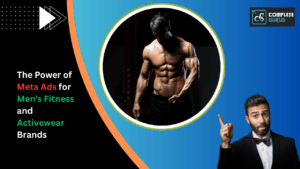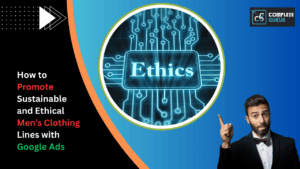In the competitive world of premium men’s fashion, simply launching an e-commerce store isn’t enough. To stand out, you need to be where your audience is searching — and that’s Google. Running effective Google Ads campaigns can bring targeted traffic, enhance brand credibility, and significantly boost sales. But without optimization, you risk wasting your ad spend.
In this comprehensive guide, we’ll break down how to strategically optimize Google Ads for premium men’s fashion e-commerce brands and achieve a high return on ad spend (ROAS).
Whether you’re running your own campaigns or looking to work with experts, this blog will guide you through proven tactics that successful brands use daily.
Why Google Ads Matter for Premium Fashion Brands
Google Ads (formerly AdWords) allows you to target users actively searching for products like yours. In the premium men’s fashion segment, where competition is fierce and margins are higher, Google Ads provide measurable results and instant visibility.
Key Benefits:
- Intent-Based Targeting: Reach users ready to purchase.
- High ROI Potential: Control over budget, audience, and creatives.
- Immediate Results: Unlike SEO, paid ads work instantly.
- Scalability: Test, optimize, and scale quickly.
Many fashion e-commerce brands invest heavily in branding. But to convert brand equity into revenue, pairing your website with performance-based Google Ads campaigns is essential. If you’re looking for expert help, consider our digital marketing services.
Step 1: Define Your Target Audience and Buyer Persona
Before launching any campaign, it’s crucial to understand who you’re targeting.
Ask Questions Like:
- Who is your ideal customer?
- What keywords are they using to search for your products?
- What type of device do they shop on?
- What’s their average purchase value?
For a premium men’s fashion brand, your audience likely values:
- Quality over price
- Brand aesthetics
- Trustworthy customer reviews
- Quick delivery and seamless UX
Knowing this helps you tailor your Google Ads messaging, ad extensions, and landing pages.
Step 2: Keyword Research That Matches Purchase Intent
Not all keywords are created equal. Avoid broad terms like “men’s clothes” unless you have an enormous budget. Instead, focus on high-intent, long-tail keywords like:
- “Buy premium men’s leather jacket online”
- “Luxury men’s formal wear store”
- “Designer men’s jeans with free shipping”
Use tools like:
- Google Keyword Planner
- SEMrush or Ahrefs
- Competitor campaigns
- Google Search Suggestions
Pro Tip: Segment your keywords by category (e.g., formal wear, streetwear, accessories) and create separate ad groups for higher Quality Scores.
Step 3: Create Highly Relevant Ad Copy
Your ad copy must do three things:
- Capture attention
- Communicate value
- Compel action
Example Ad Copy for a Premium Men’s Fashion Brand:
Headline: Designer Men’s Suits – 20% Off This Week
Description: Handcrafted Italian suits for modern men. Free worldwide shipping. 30-day return. Shop Now!
Best Practices:
- Use dynamic keyword insertion where possible
- Highlight unique selling propositions (USPs)
- Include urgency (“Limited Time Offer,” “Only 3 Left in Stock”)
- Use sitelink, callout, and structured snippet extensions
For better performance, work with an expert designer to enhance landing page consistency. You can hire a designer to keep your ads and pages visually aligned with your brand.
How Men’s Streetwear Brands Can Dominate Instagram and Facebook Ads
 Step 4: Build High-Converting Landing Pages
Step 4: Build High-Converting Landing Pages
The biggest mistake brands make? Spending thousands on Google Ads that send users to poorly optimized landing pages.
Key Elements of a High-Converting Page:
- Clean and minimalist layout
- Fast load times
- Mobile responsiveness
- Trust signals (e.g., reviews, security badges)
- Compelling product images
- Clear call-to-action (CTA)
Make sure your landing page matches your ad copy and keywords. If your ad promotes “luxury men’s watches,” don’t send them to a generic homepage. Direct them to a curated collection page or product page. Need tech help? Hire a developer to optimize your site performance.
Step 5: Use Smart Bidding Strategies
Manual bidding can be effective but labor-intensive. Google’s Smart Bidding strategies like Target ROAS and Maximize Conversions use AI to optimize bids based on conversion data.
Recommended Bidding Approaches:
- Maximize Clicks – For new campaigns with little data
- Target CPA (Cost Per Acquisition) – For stable lead/sales generation
- Target ROAS – For profit-driven e-commerce stores
Start small, monitor results, and scale what works. Regular testing and refinement are non-negotiable.
Step 6: Retarget and Re-engage With Dynamic Remarketing
Not everyone converts on the first visit, especially in premium segments where price justifies a longer decision cycle. That’s where remarketing comes in.
Tools:
- Google Ads Remarketing Lists
- Dynamic Remarketing (show exact products users viewed)
- YouTube Remarketing (for storytelling and branding)
Use engaging visuals, reminders, and incentives to bring back interested shoppers. Combine this with Facebook Ads for Doctors style techniques — the same remarketing strategies used in healthcare can power e-commerce success too.
Step 7: Track, Analyze, and Improve Campaigns
What gets measured gets improved.
Key Metrics to Watch:
- CTR (Click-Through Rate)
- Conversion Rate
- Cost Per Conversion
- Impression Share
- Bounce Rate
- ROAS (Return on Ad Spend)
Use:
- Google Analytics
- Conversion Tracking Pixels
- UTM Parameters
- A/B Testing Tools
Build reports weekly and optimize campaigns based on real-time data. Remove underperforming keywords and allocate more budget to top performers.
Real Example: Scaling a Men’s Fashion Brand with Google Ads
A luxury men’s fashion brand approached us with stagnant traffic and low sales despite high social media engagement. By focusing on search intent, refining their ad structure, and launching dynamic product remarketing, we helped them achieve:
- 4x ROAS in 60 days
- 60% decrease in Cost Per Click
- 80% growth in returning customer rate
Need help implementing something similar? Contact us today for a free audit.
The Role of Lifestyle Marketing in Ads for Men’s Fashion
Bonus Tip: Don’t Forget the Backend
Running Google Ads without a solid backend is like having a Ferrari with no engine.
Make sure:
- Your accounting is clean and ad expenses are properly tracked
- Inventory systems are synced with ad platforms
- Product data feeds are optimized
Explore our accounting services to streamline operations and track true ROI.
Final Thoughts
Google Ads for men’s fashion e-commerce isn’t just about driving traffic — it’s about attracting the right traffic. With proper targeting, keyword strategy, ad creatives, and landing page optimization, you can grow your brand profitably in a crowded market.
Whether you’re a founder, marketing manager, or fashion entrepreneur, following these steps can help you scale intelligently.
Need expert support to get it right from the start? Hire a digital marketer or reach out to our team today.
TL;DR: Key Takeaways
✅ Use long-tail keywords with buyer intent
✅ Optimize your ad copy and visuals
✅ Send traffic to high-converting landing pages
✅ Use smart bidding and remarketing
✅ Track results and keep optimizing

I am Ashutosh – a seasoned digital marketer, bringing digital transformation to businesses, complementing businesses’ growth via generating qualified leads, drive site inbound traffic via organic and inorganic approach, & build their brands through useful, well-designed marketing strategies and Marketing Automation implementation via Chat GPT, HubSpot & Zoho.







